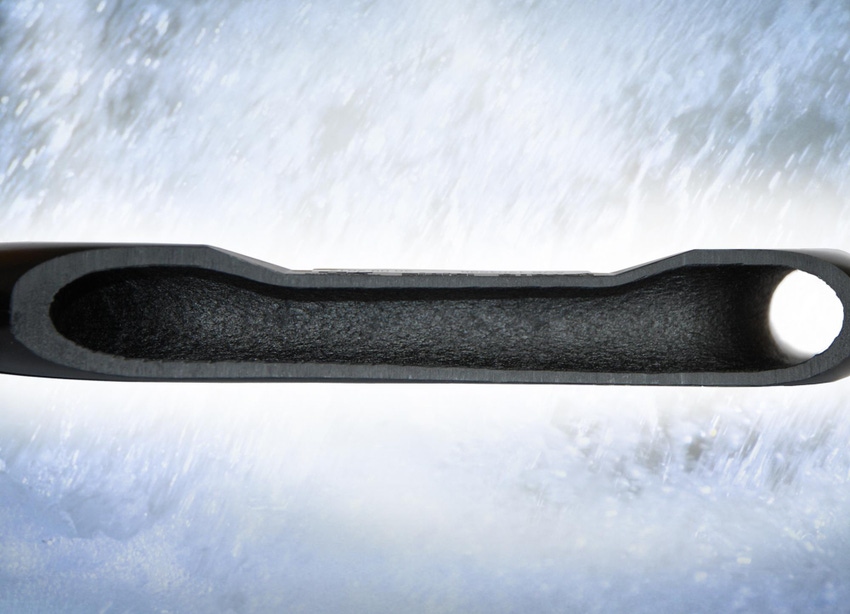Hollow parts requiring ultra-smooth inner surfaces can be injection-molded using water-injection technology. In a boost to the process, BASF (Leverkusen, Germany) is expanding its line-up of polyamide (PA) grades that have been optimized for the use of water-injection technology (WIT) in injection molding.
March 15, 2013

Hollow parts requiring ultra-smooth inner surfaces can be injection-molded using water-injection technology. In a boost to the process, BASF (Leverkusen, Germany) is expanding its line-up of polyamide (PA) grades that have been optimized for the use of water-injection technology (WIT) in injection molding.
|
Special grades for water injection molding suit coolant, |
The new WIT grades are Ultramid A3HG6 WIT Balance and Ultramid A3WG7 WIT, which BASF is now offering in commercial quantities. The grades are reportedly ideal for liquid-carrying lines.
Experts at BASF told PlasticsToday:
Modifications made on the polyamide matrix are leading to a higher hydrophobicity of the corresponding polyamide compound and therefore, due a reduced water uptake Ultramid A3HG6 WIT Balance is less prone to undergo hydrolytic degradation. As a result the hydrolytic resistance of Ultramid A3HG6 WIT Balance is higher by more than 300% compared to Ultramid A3WG7 WIT.
Owing to its improved hydrolysis resistance, Ultramid A3HG6 WIT Balance is particularly well-suited for components that carry coolant or that come into contact with water. At the same time, the content of PA 6.10 in this material also translates into high stress-cracking resistance to calcium chloride, thus taking into account the more stringent requirements made in terms of resistance to road salt. Particularly in Asia, calcium chloride is often spread on icy roads.
In contrast, BASF recommends its new Ultramid A3WG7 WIT, which is reinforced with 35% glass fibers, especially for tubes that convey oil such as those employed for dipsticks, or else for other components that have to meet high demands in terms of oil resistance, stiffness and dimensional stability.
Both materials reportedly lend themselves very well for WIT processing. In the meantime, the hydrolysis-resistant basic product of the WIT series, namely, Ultramid A3HG6 WIT, has become the material of choice for many WIT applications such as cooling water pipes, says BASF.
About the Author(s)
You May Also Like



